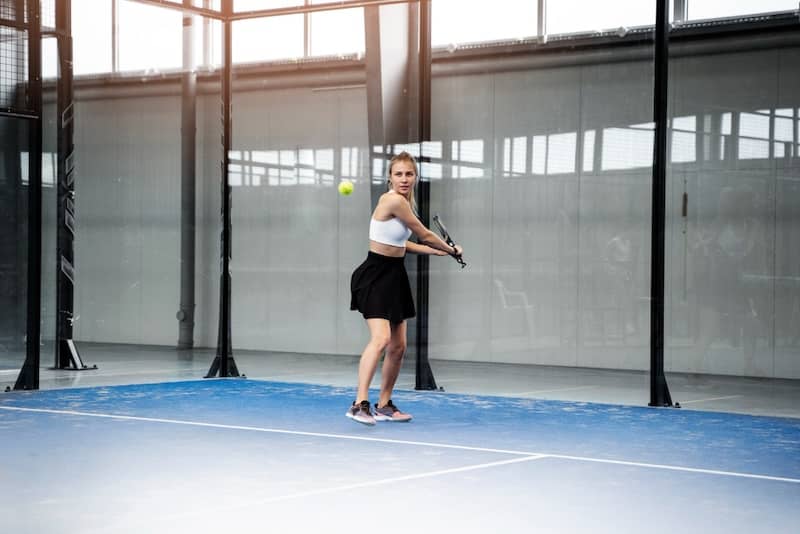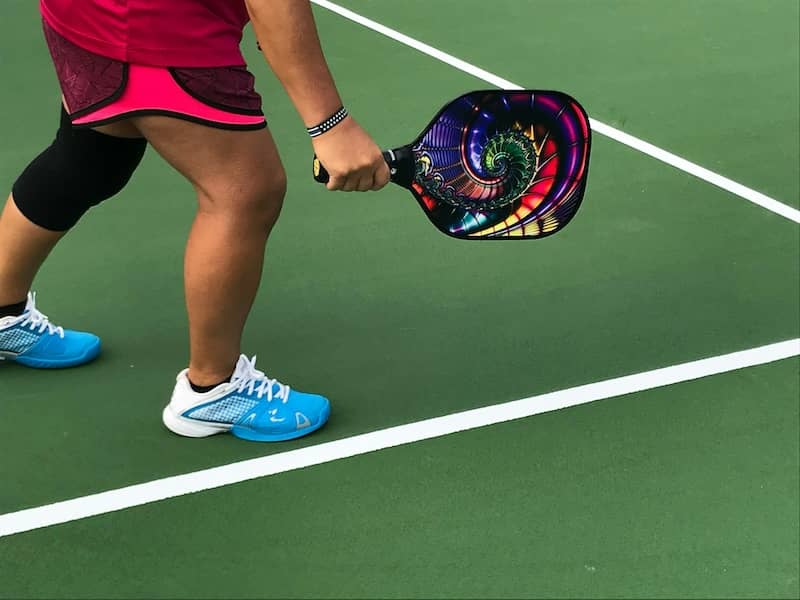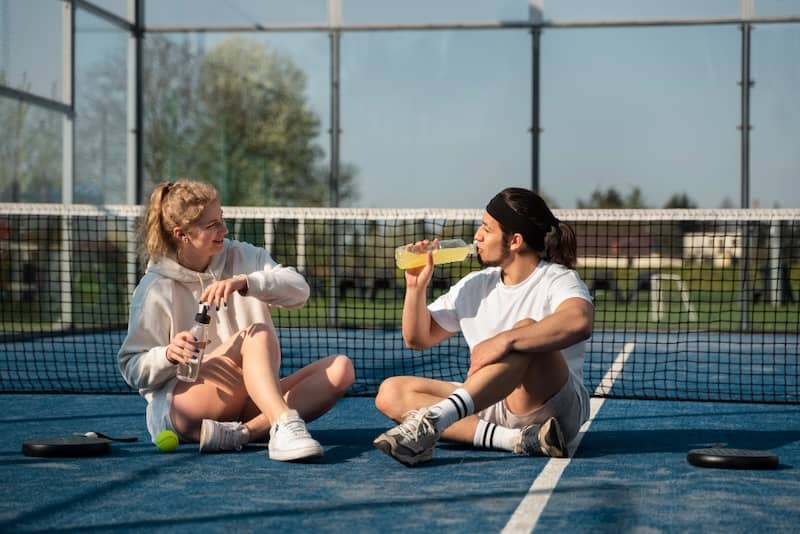Doubles, or the four-player version, is the most popular type of pickleball play. However, sometimes you don’t have three friends available for a game or want to switch things up. In that case, try a singles game. Because you must cover the entire court yourself, rather than splitting the territory with your doubles partner, pickleball singles games are more physically demanding and even better exercise. While the fundamentals are the same, you’ll need to learn a few differences between pickleball singles and doubles. Before you hit the court for a one-on-one match, read up on how to play pickleball singles.
Serving
In a doubles game, the server stays in the same spot the entire time they hold the serve. For singles, you switch sides after each successful serve. Your first serve will be from the right side of the court.
The easiest way to remember which side to serve from is to look at the score. You serve from the right if your score is an even number (0, 2, 4, etc.). If your score is odd, you serve from the left side of the court.
This tie between score and serving position also makes it easier to figure out the score if you have forgotten it. Remembering where you stood when you served can help you recall the score because you’ll know whether your points were odd or even.
You keep the serve, alternating sides until you fault. Then, it is a side-out; you lose the serve, and it goes to the other player, who will start their serve from the right side of their court.
In doubles, on the first serve, there is an exception to the usual rotation of service, with the first team only having one player serve before the serve switches to the opponents. In singles, there is no need for this exception. The first serve is no different from any subsequent serve. Player one serves, switching sides of the court each time until they fault. Then the other player serves, switching sides until they fault. The serve then goes back to player one and continues like that until the game is over.
Scoring
A pickleball doubles score has three numbers: the serving team’s score, the receiving team’s score, and a one or two to indicate which player on the team is serving. Since singles play only has one person on each team, and the serve switches to your opponent after you lose a service point, there’s no need for that third number.
You still need to call out the score before each point, but you’ll only need to say your and the other player’s point totals.
As in doubles, first to 11 points wins, as long as they are ahead by two or more.
Strategy
Pickleball singles strategy is similar to the strategy in a doubles game. However, you can employ a few additional strategies when playing against a single player to help you reach that magic number 11 before your opponent.
1. Move with your Opponent.
When your opponent moves to the left or right of the court, stay roughly across from them, close to the centerline. This positioning makes it more difficult for your opponent to move into the non-volley zone. It also helps you avoid creating a gap on the court where the other player can hit a quick shot directly in front of themself while you are across the court and unable to make it to the ball in time.
2. Forehands are Better than Backhands.
There will always be a place for backhand shots. If the ball heads toward your non-dominant side and you don’t have sufficient time to move around it, go for the backhand. But in singles play, backhands are less desirable. Most players have a weaker backhand than forehand. Avoid weak shots because you are the only player on the court, so no one can help you recover.
Backhand shots also put your body slightly out of ideal position. Returning to a neutral, ready stance can take a moment longer than with a forehand. When you don’t have a partner to pick up the slack, that moment can be a point-ender.
3. Own the Kitchen.
In singles play, the first player to the non-volley zone often wins the point. That’s because, from there, you can increase the game’s pace and control where your opponent moves, creating opportunities you can exploit.
Try to beat your opponent to the kitchen (non-volley zone) line. Once you are there, stay. Controlling the game’s speed and moving your opponent around their court until you can create a point-winning gap.
Skinny Singles
As we mentioned earlier, pickleball singles is more physically taxing than doubles. If you are looking for a game with the more leisurely pace of doubles but you only have one other player, then what’s known as skinny singles may be just what you want.
Skinny singles divides the pickleball court in half, making only one section a legal play area. That way, you have less ground to cover as you try to retrieve your opponent’s returns. Any ball that lands outside this divided court is a fault, and you should treat it like any out-of-bounds ball in a doubles match.
Skinny singles plays like a hybrid between singles and doubles. As with doubles, you are only responsible for half the court. But you don’t have a partner to cover the other half. You are responsible for making every shot.
There are several ways to divide the court:
-
Down-the-Line
The most straightforward division is to choose one side of the court and play only there, with you and your opponent across from one another. Everything on the other side of the centerline is out of bounds. This version is called down-the-line skinny singles.
-
Cross-Court
In cross-court skinny singles, the opposing player stands diagonally from the server. You can then rotate every point so that the players are always diagonal from one another.
-
Combination
The third court-division style is a combination of those two. The server serves from the right, or even side, with the receiver diagonal from them. If the server wins the point, they move to the odd side of their court. Their opponent does not rotate sides, so the next point is played with the players across from each other. Play continues like this, with a player changing sides on winning points.
The most significant difference between singles and doubles pickleball is the athleticism required unless you opt for skinny singles. There are slight differences in the serving rotation and scoring, but the game’s core rules remain the same. Singles pickleball strategy has a few nuances compared to doubles strategy, but many of the same techniques apply. The best way to figure out whether singles pickleball is for you is to hit the court with a friend and try it out.



